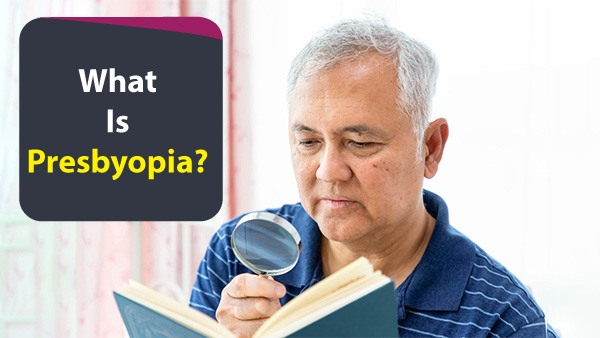Just In
- 4 hrs ago

- 5 hrs ago

- 8 hrs ago

- 8 hrs ago

Don't Miss
- Finance
 Gold Price In US: Yellow Metal Rates Hold Steady Amidst Easing Middle East Tensions; GDP Data Awaited
Gold Price In US: Yellow Metal Rates Hold Steady Amidst Easing Middle East Tensions; GDP Data Awaited - Sports
 Pakistan vs New Zealand: Who Can Replace Mohammad Rizwan, Irfan Khan in PAK Squad?
Pakistan vs New Zealand: Who Can Replace Mohammad Rizwan, Irfan Khan in PAK Squad? - Movies
 Uorfi Javed Gets Trolled For Posing In Semi-n*de Clothes, Internet Asks To Do ‘High Five', Here's Why
Uorfi Javed Gets Trolled For Posing In Semi-n*de Clothes, Internet Asks To Do ‘High Five', Here's Why - News
 Kharge's Sharp Retort To PM Modi: Correcting Misinformation On Congress Manifesto 2024
Kharge's Sharp Retort To PM Modi: Correcting Misinformation On Congress Manifesto 2024 - Automobiles
 Royal Enfield Unveils Revolutionary Rentals & Tours Service: Check Out All Details Here
Royal Enfield Unveils Revolutionary Rentals & Tours Service: Check Out All Details Here - Technology
 Elon Musk’s X Is Launching a TV App Similar to YouTube for Watching Videos
Elon Musk’s X Is Launching a TV App Similar to YouTube for Watching Videos - Education
 AICTE introduces career portal for 3 million students, offering fully-sponsored trip to Silicon Valley
AICTE introduces career portal for 3 million students, offering fully-sponsored trip to Silicon Valley - Travel
 Escape to Kalimpong, Gangtok, and Darjeeling with IRCTC's Tour Package; Check Itinerary
Escape to Kalimpong, Gangtok, and Darjeeling with IRCTC's Tour Package; Check Itinerary
Prevention Of Blindness Week: What Is Presbyopia, A Common Age-Related Eye Condition? Causes & Treatments
Every year from 1 April to 7 April, the government of India plans a week-long campaign to observe "Prevention of blindness week" and raise awareness against the causes of blindness and problems faced by blind people, and how to prevent them.

Blindness is one of the painful eye conditions and presbyopia or age-related visual impairment can impact the quality of life of patients. Also, the prevalence of presbyopia is more compared to blindness caused by other reasons, as people reaching over 40 or 45 are bound to face the problem due to ageing, says a study. [1]
Let's know about presbyopia in detail.
What Is Presbyopia?
Presbyopia is a common age-related eye disorder leading to visual impairment. In a study conducted on the Brazilian Amazon population, presbyopia was found to be responsible for 71.8 per cent of visual impairment, followed by cataracts (16.5 per cent) and pterygium (2.5 per cent). [2]
The condition is considered to be a normal part of ageing and it is ever-increasing and affecting billions of people worldwide. There are no effective preventive and treatment methods for presbyopia; it can only be corrected by methods like prescribed reading glasses.

Causes Of Presbyopia
The lenses of the eyes have refractive power or focusing powder that allows them to focus on objects placed near or far away. For example, if an object is located nearby, the lenses will change shape and become curved and thicker with the help of circular eye muscles that constrict to allow the lens to curve and see the nearby things clearly. [3]
Likewise, to see far objects clearly, the lenses get flatter and thinner and the circular eye muscles relax. The lenses flex more if the object is closer while less if it is far.
With ageing, the eye muscles get weaker and lose their ability to flex or expand to adjust the focusing lens. Also, the lens becomes less flexible and harder and finds it difficult to curve.
This affects the near vision and thus, patients with presbyopia find it difficult to read books or see nearby objects, while their farsightedness is not affected.

Symptoms Of Presbyopia
As presbyopia usually develops after the age of 40, some of the noticed symptoms may include: [4]
- Headache after doing close work or reading.
- Eyestrain after doing close work or reading.
- Holding objects far away to view them clearly.
- Problems seeing all nearby objects.
- Blurred vision even at normal reading distance.
- Mild fatigue after doing close work or reading.
- Squinting
- Worsening of the aforementioned symptoms in low light.
Risk Factors Of Presbyopia
Some of the risk factors of presbyopia may include:
- Age over 40.
- Being female. [5]
- Underlying diseases like anaemia, multiple sclerosis, diabetes or heart conditions may result in premature presbyopia or the condition before 40. [6]
- Underlying eye conditions like hyperopia or farsightedness in which a person is unable to see nearby objects clearly, before the age of 40.
- Eye trauma
- Use of certain drugs like antianxiety, antihistamines, antidepressants and antipsychotics.
- Chronic consumption of alcohol or use of illicit drugs.
- An eye surgery, particularly done in the inner areas of the eyes.
- Unhealthy diet and lifestyle.
Ramadan Special Sweets: How To Prepare Carrot Kalakand
Complications Of Presbyopia
If left untreated for longer, presbyopia may result in complications like:
- Sudden vision loss in one eye.
- Double vision
- Blurred vision
- Seeing black spots around lights.
Diagnosis Of Presbyopia
A thorough eye exam might help an eye doctor diagnose presbyopia. This exam will include a refraction assessment to determine how well a patient sees items at different distances. A medical expert will be able to detect if you have presbyopia and/or astigmatism, as well as whether you are nearsighted or farsighted, based on the results of the refraction test. [7]
To get a better view of the inner portions of your eyes, a doctor will most likely dilate the eyes with specific eye drops. Although the drops are harmless, the eyes may be light sensitive for two to three hours thereafter.
Experts suggest that people over 40, with or without any eye disease, must get their eyes examined every two to four years. This is because as we get older, the symptoms of presbyopia may start coming or getting worse. This increases the need for more eye exams. A yearly eye checkup regardless of age is the best if you have a family history of eye illness or diabetes.

Treatments Of Presbyopia
Some of the treatment options for presbyopia may include:
- Non-surgical options: This includes the use of prescribed spectacles or lenses to comfortably read or view near objects. They are also a cheaper option compared to surgical methods. [8]
- Surgical procedures: It includes surgical methods like conductive keratoplasty, laser refractive correction, scleral procedures and monovision with intraocular implant: [9]
To Conclude
Presbyopia is the most common physiological change that occurs in the eyes. The condition causes universal near vision impairment with advancing age. If you are over 40 and observing the symptoms of presbyopia, get the checkup done as early as possible and get the vision corrected with prescribed glasses or surgery, if needed.


 Click it and Unblock the Notifications
Click it and Unblock the Notifications




